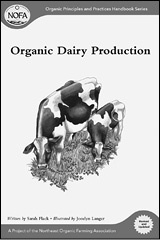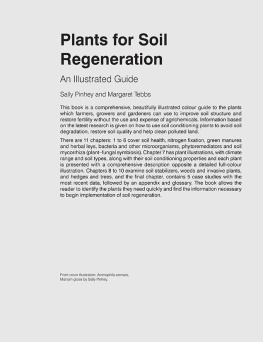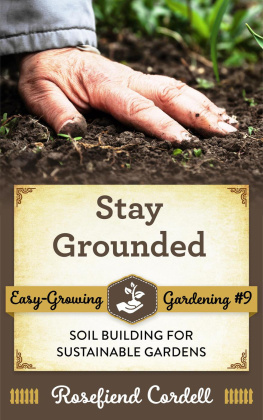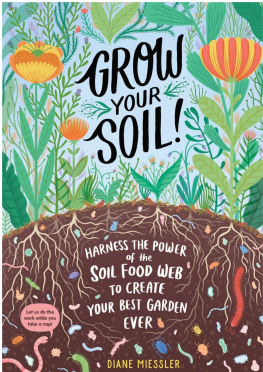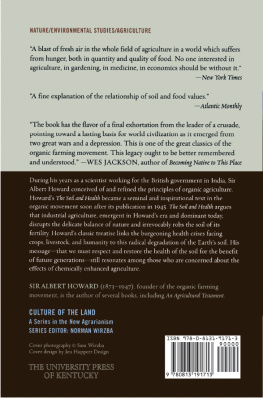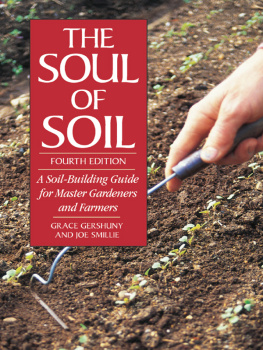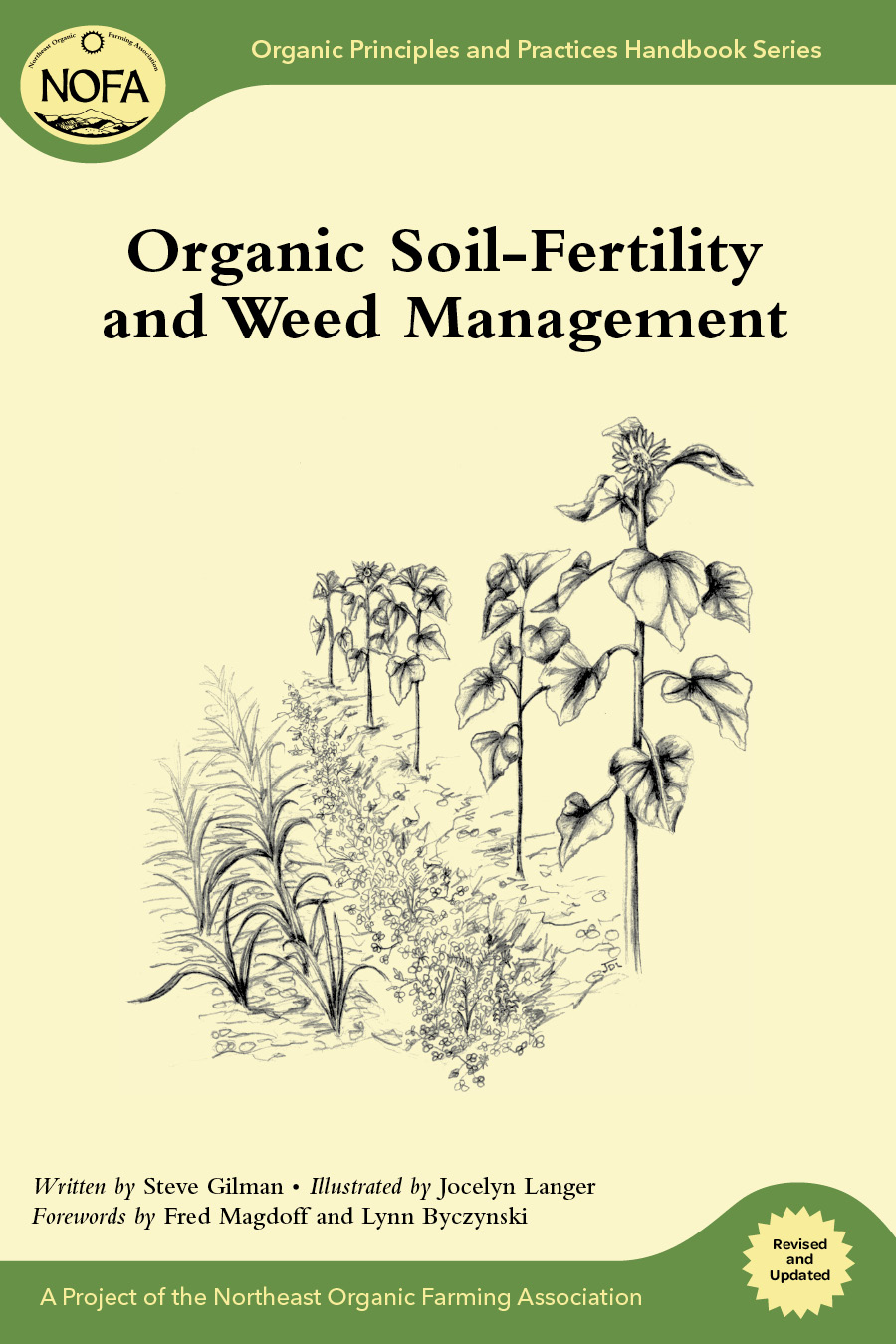

Organic Principles and Practices Handbook Series
A Project of the Northeast Organic Farming Association
Organic Soil-Fertility and Weed Management
Revised and Updated
Steve Gilman
Forewords by Fred Magdoff and Lynn Byczynski
Illustrated by Jocelyn Langer
Chelsea Green Publishing
White River Junction, Vermont
Copyright 2000, 2001, 2002 by the NOFA Educational Fund.Copyright 2011 by the Northeast Organic Farming Association Interstate Council.
All rights reserved.
No part of this book may be transmitted or reproduced in any form by any means without permission in writing from the publisher.
Illustrations copyright 2000, 2001, 2002, 2011by Jocelyn Langer.
Originally edited by Jonathan von Ranson with assistance provided by volunteer NOFA farmers Julie Rawson, Lynda Simkins, Donna Berlo, Rich Williams, Beth Henson, and Chris Holopainen.
Organic Soil-Fertility Management and Organic Weed Management were first published in 2000 by NOFA/Mass., 411 Sheldon Rd., Barre, MA 01005,
First Chelsea Green editions published 2002.
Chelsea Green revised and updated combined edition published 2011.
Editorial Coordinator: Makenna Goodman
Project Manager: Bill Bokermann
Copy Editor: Cannon Labrie
Proofreader: Helen Walden
Indexer: Peggy Holloway
Designer: Peter Holm, Sterling Hill Productions
10 9 8 7 6 5 4 3 2 1 11 12 13 14
Our Commitment to Green Publishing
Chelsea Green sees publishing as a tool for cultural change and ecological stewardship. We strive to align our book manufacturing practices with our editorial mission and to reduce the impact of our business enterprise in the environment. We print our books and catalogs on chlorine-free recycled paper, using vegetable-based inks whenever possible. This book may cost slightly more because we use recycled paper, and we hope youll agree that its worth it. Chelsea Green is a member of the Green Press Initiative, a nonprofit coalition of publishers, manufacturers, and authors working to protect the worlds endangered forests and conserve natural resources. Organic Soil-Fertility and Weed Management was printed on Joy White, a 30-percent postconsumer recycled paper supplied by Thomson-Shore.
Library of Congress Cataloging-in-Publication Data
Gilman, Steve.
Organic soil-fertility and weed management / Steve Gilman ; forewords by Fred Magdoff and Lynn Byczynski ; illustrated by Jocelyn Langer. -- Updated and rev.
p. cm. -- (Organic principles and practices handbook series)
A Project of the Northeast Organic Farming Association.
Originally published: Barre, MA : NOFA/Mass., 2000.
First Chelsea Green ed. published 2002.
ISBN 978-1-60358-359-6
1. Soil management. 2. Soil fertility. 3. Organic farming. I. Langer, Jocelyn. II. Northeast Organic Farming Association. III. Title. IV. Series: Organic principles and practices handbook series.
S591.G56 2011
631.4--dc22
2011002169
eISBN: 9781603583602
Chelsea Green Publishing Company
P.O. Box 428
White River Junction, VT 05001
(800) 639-4099
www.chelseagreen.com
Best Practices for Farmers and Gardeners
The NOFA handbook series is designed to give a comprehensive view of key farming practices from the organic perspective. The content is geared to serious farmers, gardeners, and homesteaders and those looking to make the transition to organic practices.
Many readers may have arrived at their own best methods to suit their situations of place and pocketbook. These handbooks may help practitioners review and reconsider their concepts and practices in light of holistic biological realities, classic works, and recent research.
Organic agriculture has deep roots and a complex paradigm that stands in bold contrast to the industrialized conventional agriculture that is dominant today. Its critical that organic farming get a fair hearing in the public arenaand that farmers have access not only to the real dirt on organic methods and practices but also to the concepts behind them.
About This Series
The Northeast Organic Farming Association (NOFA) is one of the oldest organic agriculture organizations in the country, dedicated to organic food production and a safer, healthier environment. NOFA has independent chapters in Connecticut, Massachusetts, New Hampshire, New Jersey, New York, Rhode Island, and Vermont.
This handbook series began with a gift to NOFA/Mass and continues under the NOFA Interstate Council with support from NOFA/Mass and a generous grant from Sustainable Agriculture Research and Education (SARE). The project has utilized the expertise of NOFA members and other organic farmers and educators in the Northeast as writers and reviewers. Help also came from the Pennsylvania Association for Sustainable Agriculture and from the Maine Organic Farmers and Gardeners Association.
Jocelyn Langer illustrated the series, and Jonathan von Ranson edited it and coordinated the project. The Manuals Project Committee included Bill Duesing, Steve Gilman, Elizabeth Henderson, Julie Rawson, and Jonathan von Ranson. The committee thanks SARE and the wonderful farmers and educators whose willing commitment it represents.
Thanks to Carl Reidel, Amy McMillon, Remi Gratton, Carol Dunsmore, Gwyneth Flack, Steve St. Onge, and Doug Flack for the editorial help. Special thanks also to Nat Bacon and Lisa McCrory, and to the many farmers and veterinarians who provided me with information and inspiration.
Contents
The primary management goal for organic farmers should be to build healthy soils on their farms. A healthy soil is the foundation for healthy plants and, therefore, a healthy farm. Creating a soil that is healthybiologically, chemically, and physicallyis not a simple task and cannot be accomplished by using only one or two practices. The creative management of the farmer, and not a cookbook recipe, is the path to healthy soils. There are, however, certain guidelines, approaches, and rules of thumb that can provide a framework for farmers.
Soil organic-matter management is at the heart of soil fertility for organic farmers. Organic matter influences almost all soil properties. It provides food for soil organisms, and, during the decomposition process, nutrients are released from organic matter, and sticky substances that help form soil aggregates are produced. Better plant nutrition and physical condition of the soilwith better water infiltration and storagepromote healthier plants. Many hormonelike substances are produced in soils that stimulate plant growth.
A healthy soil must have plentiful supplies of organic matter added regularly: crop residues, cover crops, manures, composts, and so forth. If practices that promote healthy soils are routinely carried out, most of the problems relating to nutrient supplies for plants will be taken care of along the way. Higher cation-exchange capacity, caused by increasing organic matter, allows the soil to hold on to potassium, calcium, magnesium, and ammonium more effectively. Lots of biologically active organic matterin addition to promoting a diversity of soil food-web organismsmeans that nitrogen, phosphorus, sulfur, and other elements become available to crops as soil organisms feed on residues of crops, cover crops, manures, and composts.
As pointed out in this handbook, there are no magic bullets to creating healthy and fertile soils. Testing soils regularly helps to identify, and then remedy, potential problems of soil acidity or low levels of nutrients. Attention to basics, and the knowledge gained by careful, firsthand observationthe farmers footprints on the soilare the answer.

